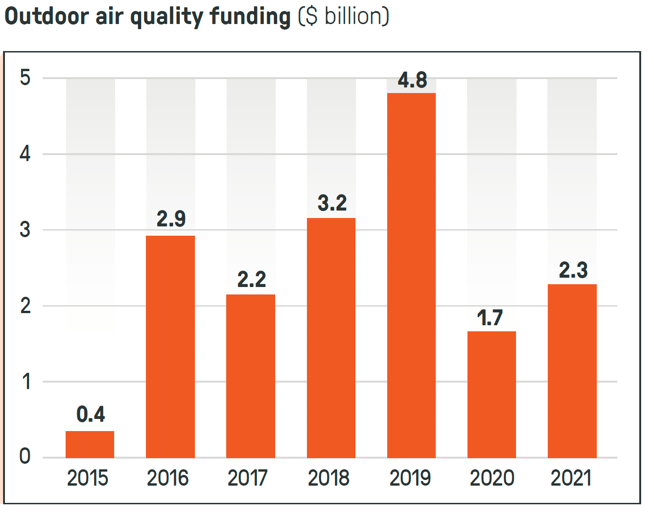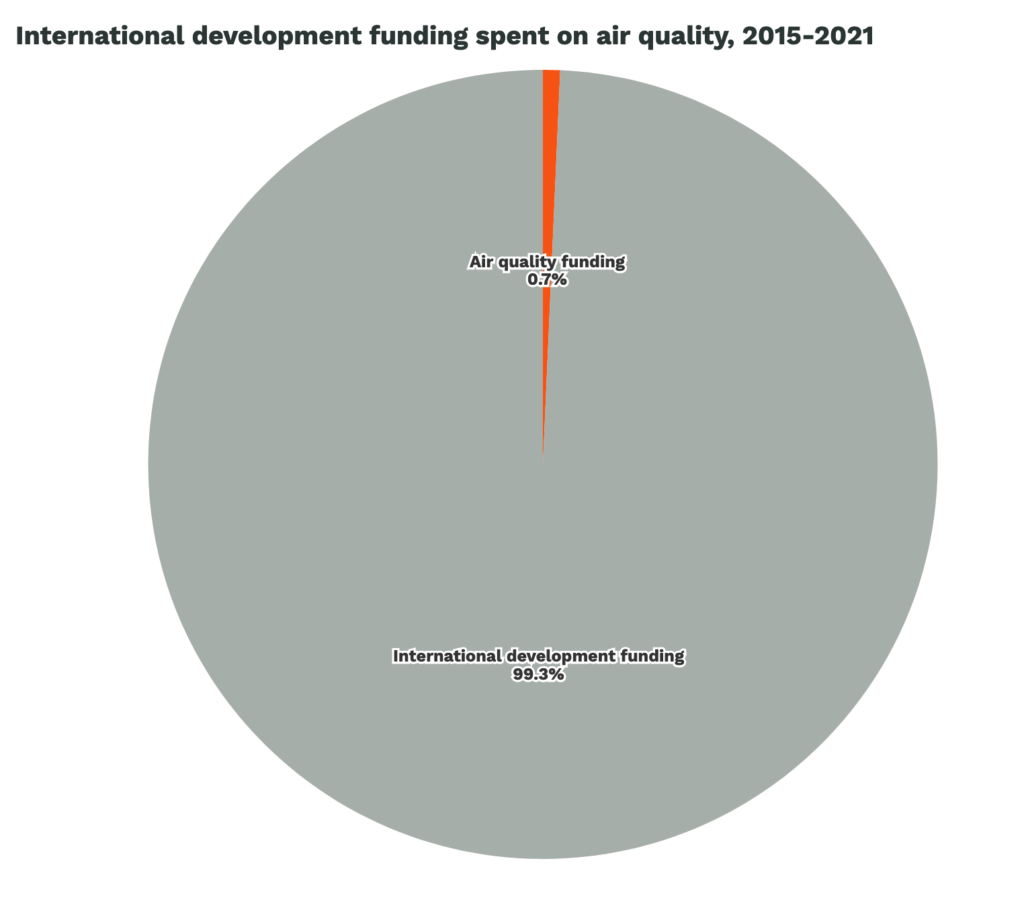Sankar Jyoti Nath |
As we approach the 2024 International Day of Clean Air for Blue Skies on September 7, the global community is urged to take immediate action to address air pollution. This year’s theme, “Invest in #CleanAirNow,” highlights the need for stronger commitments and increased financial backing to combat one of the most pressing environmental and health crises of our time. Despite being a major risk factor for premature death, air pollution has historically received minimal attention in funding. Over the last six years, only 1% of international development funding and 2% of climate finance have been allocated to mitigating air pollution.
The theme calls for collective action to tackle the significant impact that air pollution has on global health, the climate, and economies. By directing more resources toward clean air initiatives, we can save lives, mitigate climate change, and unlock sustainable development.
How Air Pollution Affects Everyone:
Air pollution has wide-ranging effects on both human health and the environment. It is a leading cause of serious health conditions, including respiratory diseases, heart disease, stroke, and lung cancer. Pollutants such as particulate matter and nitrogen oxides can cause inflammation in the lungs, leading to conditions like asthma and chronic obstructive pulmonary disease (COPD). According to the World Health Organization (WHO), air pollution causes around 7 million premature deaths each year.
In addition to human health, air pollution also significantly impacts the natural environment. Pollutants contribute to acid rain, which harms forests, lakes, and aquatic ecosystems by altering soil chemistry and damaging plant life. It can also lead to reduced agricultural yields by affecting crop health, with pollutants like ground-level ozone directly damaging plants and reducing biodiversity. These interconnected consequences highlight the profound and far-reaching impacts of air pollution on ecosystems and human society.
Why the Focus on Investment?:
Air pollution is responsible for approximately 8.1 million premature deaths each year, driving up cases of non-communicable diseases such as stroke, lung cancer, and heart disease. It’s devastating impact extends beyond health, posing a serious threat to the global economy, with an annual cost of $8.1 trillion due to increased healthcare expenses, loss of productivity, and ecosystem damage.
Despite these significant risks, funding for air quality improvement remains critically low. Between 2015 and 2021, international development funders allocated only $17.3 billion to tackle outdoor air pollution, an average of just $2.5 billion per year. This represents less than 1% of the total $2 trillion in international development commitments during the same period. For every $1,000 spent by development funders, only $7 was directed toward air quality improvements.
However, the return on investment for air pollution control is substantial. Research shows that every $1 spent on air quality improvement can yield up to $30 in economic benefits. This includes reduced healthcare costs, improved worker productivity, and extended life expectancy. Investing in cleaner air would also bolster climate resilience, support the Sustainable Development Goals, and drive economic growth by reducing pollution-related expenses.
The interconnected benefits of cleaner air underscore the urgent need for increased investments, making air quality a critical component of global health and sustainability strategies.


India’s Strategic Initiatives for Air Quality Management:
India is taking significant steps to combat air pollution through a series of targeted initiatives. The Government of India is revising its ambient air quality standards and has introduced stricter emission norms for vehicles and industries. Additionally, the country is making notable progress in renewable energy expansion, promoting electric vehicles, and providing LPG cooking fuel to millions of households to reduce pollution from biomass burning.
One of India’s most impactful efforts is the National Clean Air Programme (NCAP), which sets time-bound goals to improve air quality, particularly in 132 non-attainment cities that fail to meet national standards. The NCAP offers these cities a comprehensive framework for developing air quality management plans, with policies that address multiple sectors such as transportation, industry, and household emissions.
In 2020, based on recommendations from the 15th Finance Commission, the Indian government allocated $1.7 billion over five years to support 42 million-plus cities in reducing their air pollution by 15% annually. This performance-based funding model is the first of its kind globally, incentivizing cities to make measurable improvements in air quality.
Recognizing the need for coordinated efforts across regions, the Commission for Air Quality Management was established in 2021 to oversee air quality management in the National Capital Region and its neighboring areas. This body plays a crucial role in addressing cross-border pollution and fostering collaboration at the airshed level.
The World Bank is also a key player in supporting India’s air quality initiatives. Through its Country Partnership Framework, the World Bank has focused on building capacity, enhancing knowledge, and introducing airshed management tools. Its efforts are particularly focused on the Indo-Gangetic Plain (IGP), one of the most polluted and densely populated regions in the world. The World Bank is helping develop State Air Quality Action Plans and a Regional Airshed Action Plan for the IGP.
The Role of Individuals:
Individual actions play a vital role in improving air quality, complementing large-scale policies implemented by governments and organizations. Simple yet impactful decisions such as reducing car usage by opting for public transportation, cycling, or walking help lower emissions from traditional vehicles, which are significant contributors to urban air pollution. Similarly, switching to cleaner energy sources like solar, wind, or LPG for household use can drastically cut down emissions of harmful pollutants like carbon dioxide and methane. Supporting sustainable practices by choosing eco-friendly products, composting, and recycling further reduces pollution and waste.
Additionally, individuals can participate in community-driven initiatives, such as tree planting, clean-up campaigns, or air quality monitoring, which not only improve local air quality but also foster a sense of shared responsibility. Advocacy through social media platforms using hashtags like #CleanAirNow raises awareness and pushes for policy changes. Voting for environmentally conscious leaders and supporting legislation that promotes clean air standards magnifies the collective impact of individual efforts.
Lastly, investing in projects like the electrification of public transport and the expansion of renewable energy sources can help reduce emissions at a systemic level, addressing pollution more effectively while promoting long-term climate resilience and sustainability. These efforts, when combined with personal responsibility, can lead to healthier communities and a more sustainable planet for future generations.
A Call for Collective Action:
The 2024 International Day of Clean Air for Blue Skies is not just a day of reflection but a call to action. As the world grapples with the intertwined challenges of climate change and air pollution, this year’s theme underscores the crucial need to invest in clean air initiatives. Without immediate and substantial action, the cost of inaction will continue to rise—affecting public health, economies, and the environment.
By Investing in #CleanAirNow, we can ensure a future where everyone can breathe clean, healthy air. Let’s take collective action today to create a sustainable, resilient world for future generations.
Reference:
India State-Level Disease Burden Initiative Air Pollution Collaborators (2019). The impact of air pollution on health, economy, and environment in India: A review from 1990 to 2017. Lancet Planetary Health, 3(1), e56-e67.
MOEFCC (2019). National Clean Air Programme. Ministry of Environment, Forest and Climate Change, Government of India.
https://www.cleanairfund.org/resource/state-of-global-air-quality-funding-2023/
https://www.worldbank.org/en/country/india/publication/catalyzing-clean-air-in-india


